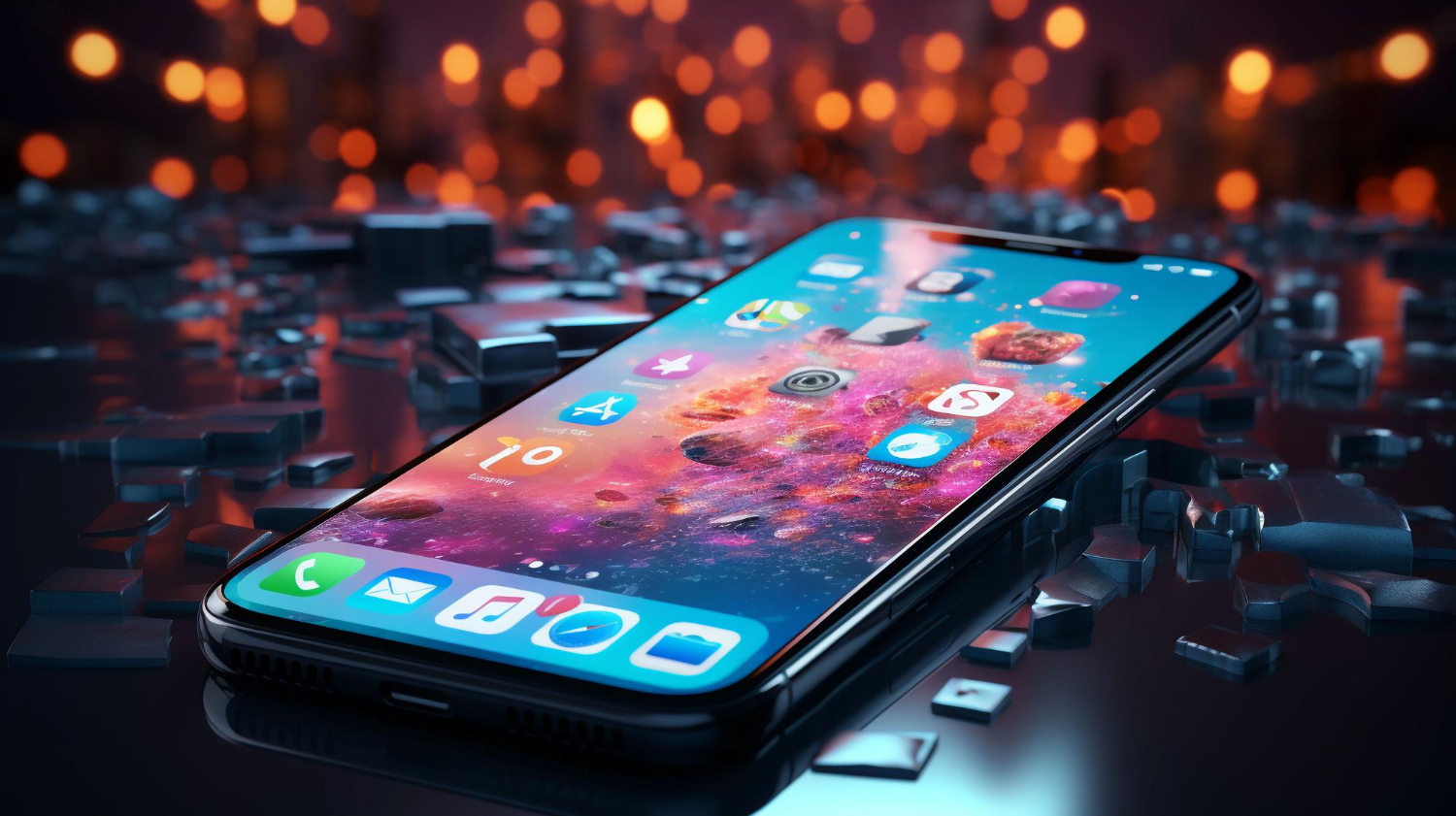BLOG
Exploring the Impact of Wearable Technology on Enterprise App Development
In today’s fast-paced world, technology has infiltrated every aspect of our lives, from communication to healthcare and beyond. One area where technology is making significant progress is wearable devices.
These devices, such as smartwatches, fitness trackers, and augmented reality glasses, have not only impacted our daily lives but are also transforming the enterprise app development landscape.
The global wearable technology market share is estimated to grow by USD 62.81 billion between 2023 and 2027, accelerating at a CAGR of 14.8%.
In this blog, we explore how wearable technology is shaping enterprise app development and the potential it holds for businesses.
How do wearables align with the enterprise mobile strategy?
As businesses are still catching up with the development of applications for smartphones and tablets, the potential impact of wearable technology apps on enterprise mobility strategies remains speculative. The level of employee adoption of wearable technology will depend on the value these apps bring to their work, in addition to streamlining and enhancing the activities of their colleagues.
For example, a company developing an app for safety glasses used by construction workers might include a feature allowing users to play their own music while viewing plans and schematics. While the widespread adoption of wearable technology may take some time, enterprise IT departments must be willing to experiment with a range of apps that involve minimal to no upfront investment. Since enterprise apps typically have a rapid 3-month release cycle, businesses must be agile and ready to respond swiftly.
Types of wearable technology
The following are a few examples of different wearable technologies:
- Smart Watches
- Hearables
- Fitness Tracker
- Smart Shoes
- Smart Clothing
- Smart Glasses
- Wearable Cameras
- Implantables
- Body Sensors
- Head-Mounted Displays
There are various ways in which wearable technology is set to dominate.
Taking Over Smartphones
Smartphone use in business operations is very common, but wearable technology has the potential to showcase its unique capabilities in scenarios where smartphones may prove unreliable or insufficient for the task at hand. Currently, wearables primarily function as accessories to smartphones in their early developmental stages. However, their ultimate advantage lies in their portability and hands-free operation, positioning them to potentially surpass smartphones in specific use cases.
Real-Life Applications
Wearable technology brings notable transformations across various industries. In healthcare, wearables are facilitating surgeries by allowing surgeons to continuously monitor procedures without interruptions. In the industrial sector, wearables like smart glasses are enabling remote technicians to provide real-time video feeds for off-site operations.
Integrating wearables into the enterprise mobility strategy
As the enterprise mobility app development team continues to work on mobile phones, the inclusion of wearables in the corporate mobility strategy remains under consideration. The team responsible for crafting enterprise applications is dedicated to enhancing and streamlining workers’ tasks. By emphasizing cost-effective app development, businesses stand to gain greater advantages.
Types of Wearable Devices Available in the Market
Smartwatches
The initial purpose of smartwatches is primarily focused on monitoring physical health and well-being. However, their functionality has significantly expanded over time. Presently, they serve as compact computing devices, enabling users to receive messages, participate in interactive media and games, share documents, and even place calls.
Smartwatches are readily accessible, extensively marketed, and boast a diverse range of applications, making them a compelling choice for business utilization and aiding in various job-related tasks.
Health and fitness monitoring devices
Fitness app development is employed to monitor activities that enhance well-being, encompassing heart rate, calorie expenditure, blood pressure, and walking distance. To enhance data precision and ensure users receive reliable readings, these devices can be integrated with mobile applications.
Even in the context of the COVID-19 pandemic, fitness apps play a crucial role. While life-saving technologies like pacemakers have long been a medical standard, more sophisticated prosthetics and implanted electronic wearables are progressively becoming integral components of healthcare and medical treatment.
The Internet of Things
Common household items such as security cameras, lights, kitchen appliances, and temperature control systems are now incorporating the capabilities of wearables, artificial intelligence, and machine learning, all thanks to the Internet of Things (IoT).
By connecting to the internet through a network of remote sensors and automation, these objects are transforming into what we commonly refer to as ‘smart homes.’ Examples of smart home devices include Amazon Echo, Alexa, and Google Home.
While wearable app development services show promising potential, it remains uncertain whether they will dominate the wearable technology landscape. According to Forbes’ research, wearable technology is projected to boost employee happiness by 3.5% and productivity by 8.5%.
According to Statista, the number of connected wearable devices has more than doubled in just three years, surging from 325 million in 2016 to 722 million in 2019. It’s anticipated that by 2022, there will be over one billion such devices worldwide.”
The Future of Wearable Technology
Over the past few years, smartwatches, fitness trackers, and VR/AR development headsets have proliferated in our culture. As the popularity of wearables continues to grow, businesses are inevitably innovating to find new applications for them in our daily lives. Here are a few potential directions for the future of wearable technology:
Wearable technology trends have profoundly impacted mobile application development, showcasing their flexibility and robust support across various industries. Today’s cutting-edge technologies have been harnessed, largely due to advancements in existing technology, surpassing global expectations of what’s achievable.
The future of the wearables market is poised for rapid technological advancement and boundless potential. Studies indicate that by 2022, an estimated 25% of US adults will acquire a wearable device. These devices will encompass a multitude of user-friendly features and offer broad multi-platform compatibility.
Conclusion
Well, it seems that the future of enterprise applications is rapidly approaching. With the ongoing progress of wearable technology in the consumer market, it’s only logical that this technology will eventually find its way into the enterprise sector. In general, it is evident that wearable technology is poised to make a significant impact on the landscape of enterprise app development in the coming years.
Related Topics
Trending Topics
Want to build Super app for your business?




